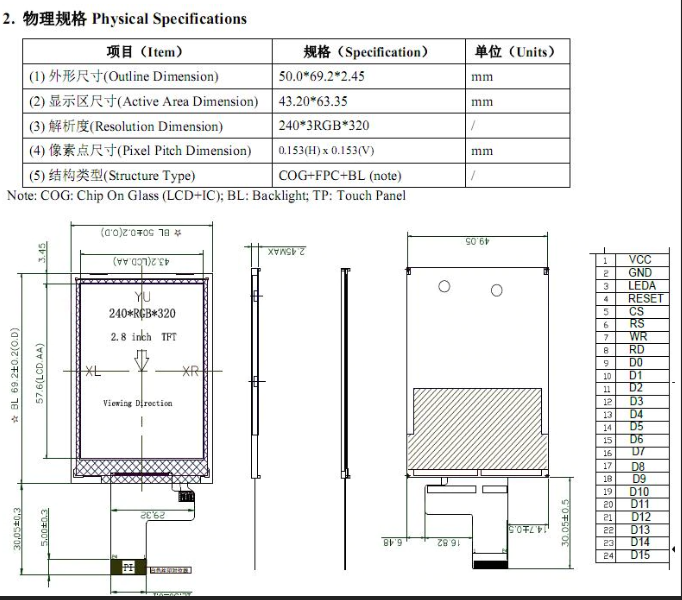I started out with the TFT first. Using the oscilloscope (Analog Discovery 2) I managed to probe each of the lines (luckily those hand-helds do expose these lines with pads) and see what they actually do. Ah, and I had to use the multimeter to test the connection between the pads and the pins on the TFT connector:

After suffering from slouching and probing it one by one, I numbered these pads. For convenience.
With the oscilloscope, probing on the pads 5 and 7 shows a pulse train that is as long as 59.52uS and each pulse takes about 189.3ns. When I divide the length of the pulse train and the pulse, it gives around 314.42 - and it is suspected that this value is pretty close to 320, which is a standard horizontal resolution (320x240)?
The rest of the other 16 pins from pin 9 to 24 could be a 16-bit RGB 565 interface. Suspecting it is a 8080-2 interface, by reading the other common datasheets for other TFT like ST7789V and ILI9341. A search online on TFT with this interface gives this:

Yes - I'm highly suspecting that. Most of the stuff matches the TFT on that little game console. Unfortunately, there isn't any data on the model number on the TFT flex cable (RX-28H7069-A2) but on my first guess, the "28" could mean 2.8-inches. So, it's a high chance this TFT belongs to the 8080-2 interface.
Discussions
Become a Hackaday.io Member
Create an account to leave a comment. Already have an account? Log In.